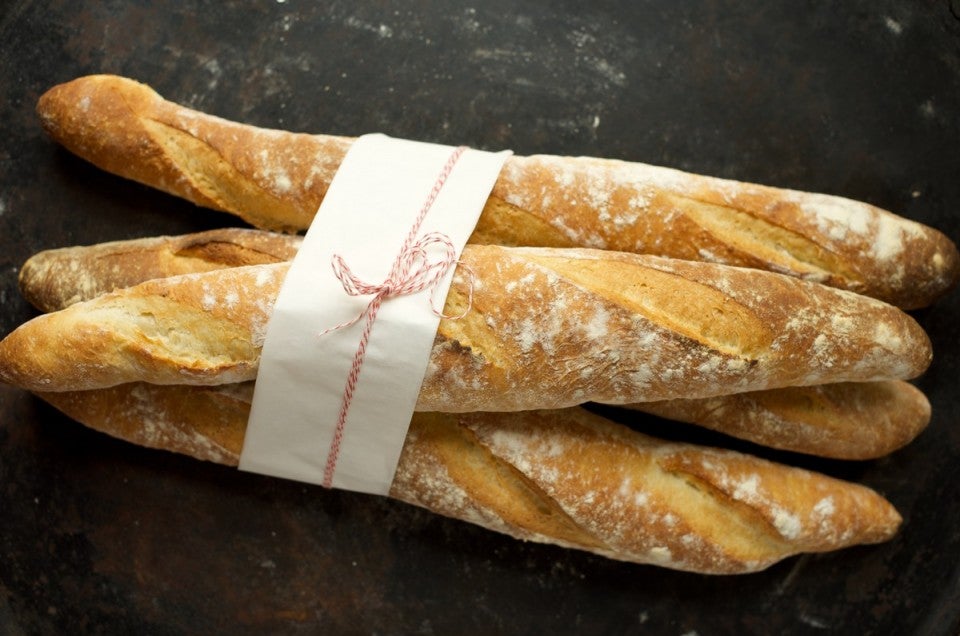


Is crusty bread your idea of heaven?
If so – the devil is in the details!
Many of us equate the words "crusty" and "artisan," assuming that there's only one path to great crusty bread: that followed by the professional baker. These bread masters lovingly tend long-rising doughs, carefully shape each loaf by hand, then bake bread to perfection in a wood-fired oven.
The result? Beautiful golden-brown loaves, richly flavored, perfectly shaped, and – of course – wonderfully crusty.
But you know what? Artisan bakers aren't the only ones who can make delicious crusty bread. You, the home baker with average (or even startup) skills can make crusty bread simply by following these five simple tips – and then applying them to their accompanying recipes.
Ready? Let's make crusty bread.
On the left, soft, butter-and-milk enriched pull-apart dinner rolls. On the right, a crusty Italian loaf. Soft dinner rolls aren't meant to be crusty; don't force them beyond their comfort zone, because therein lies disappointment.
Crusty breads are usually the simplest ones: flour, water, yeast, and salt, with no eggs, butter, sour cream, sugar, mashed potatoes, or anything else that might turn them into softies. Sure, you might see a crusty bread recipe calling for a teaspoon of sugar, or a tablespoon of dried milk powder; these small amounts of softening agents may keep the loaf's interior tender, but won't affect the crispness of the crust.

You know those Italian breads in the supermarket, the ones in crisp white paper bags printed with the name of the local Italian bakery?
If you're a Boston-area native you'll recognize this as scali bread. Its light, crisp crust flakes off in tiny shards as you rip off a hunk, creating a blizzard of seeds and crumbs: rich evidence that someone's been into the bread box.

A big, fat, round or oval loaf – a boule – doesn't have as much opportunity to shine in the crisp crust department as does a thin baguette, or individual rolls. While you can certainly make a big loaf with crisp crust (you'll see a couple of examples below), the ratio of crunchy to tender will be much smaller.
So if you're a real fan of crust (as opposed to soft interior), opt for smaller, skinnier, or flatter loaves or rolls.
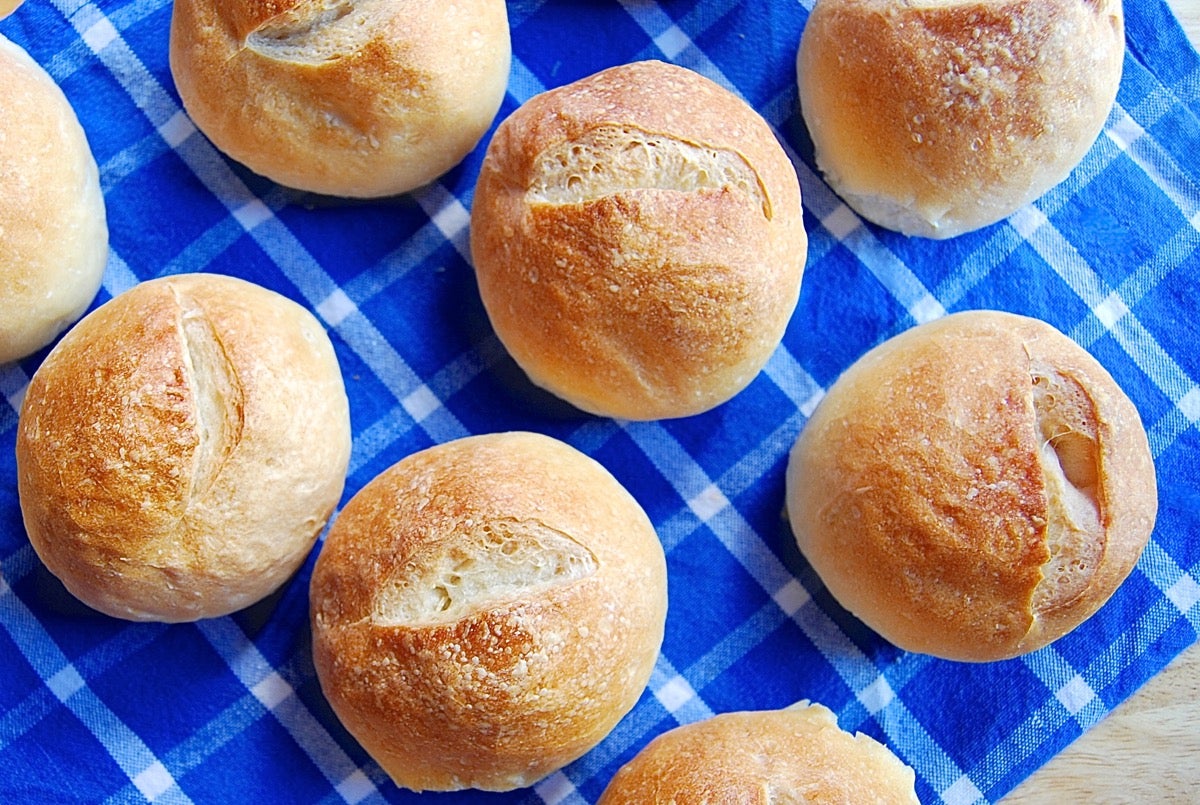
These rolls have a delicious crackly/crunchy crust due to their simple ingredients, and as a result of allowing them to proof in the refrigerator. Their texture is light and airy, rather than substantial, which makes them a wonderful mini-sandwich or dinner roll.
Serve these rolls with spaghetti, to sop up the sauce. Or use them for French dip sliders: rolls packed with hot roast beef, then dipped in the beef's savory, aromatic juice.

Remember the artisan bakers I mentioned at the beginning, those masters of the perfect crusty crust? They have a professional secret: the steam-injected oven. Nothing offers the baker quite as nice a crust as an oven filled with steam for the first part of the baking process.
While you most likely don't have access to such an oven, you can try to replicate steam's role in creating crisp crust by making your own homemade steamy oven. Some bakers like to place a sturdy pan (cast iron preferred) on the bottom shelf of the oven as it preheats, then pour 1/2 cup or so hot water into the pan as they're loading the loaves. The result? Billows of steam trapped in the oven.
Another, easier way to re-create steam's work is to simply spray or brush risen loaves with warm water before placing them into the hot oven. A third way: the French cloche (pictured above), a stoneware pan with lid that traps moisture from the baking bread, converting it to steam within its little bell-like cave.
And how, exactly, does steam create a crisp crust? Simply put, it has to do with the starch in flour. As bread bakes, its outer layer (crust) eventually reaches 180°F. At that point, the starches on the surface burst, become gel-like, and then harden in the oven's heat to a crackly consistency. Steam hitting the bread's surface facilitates this process.
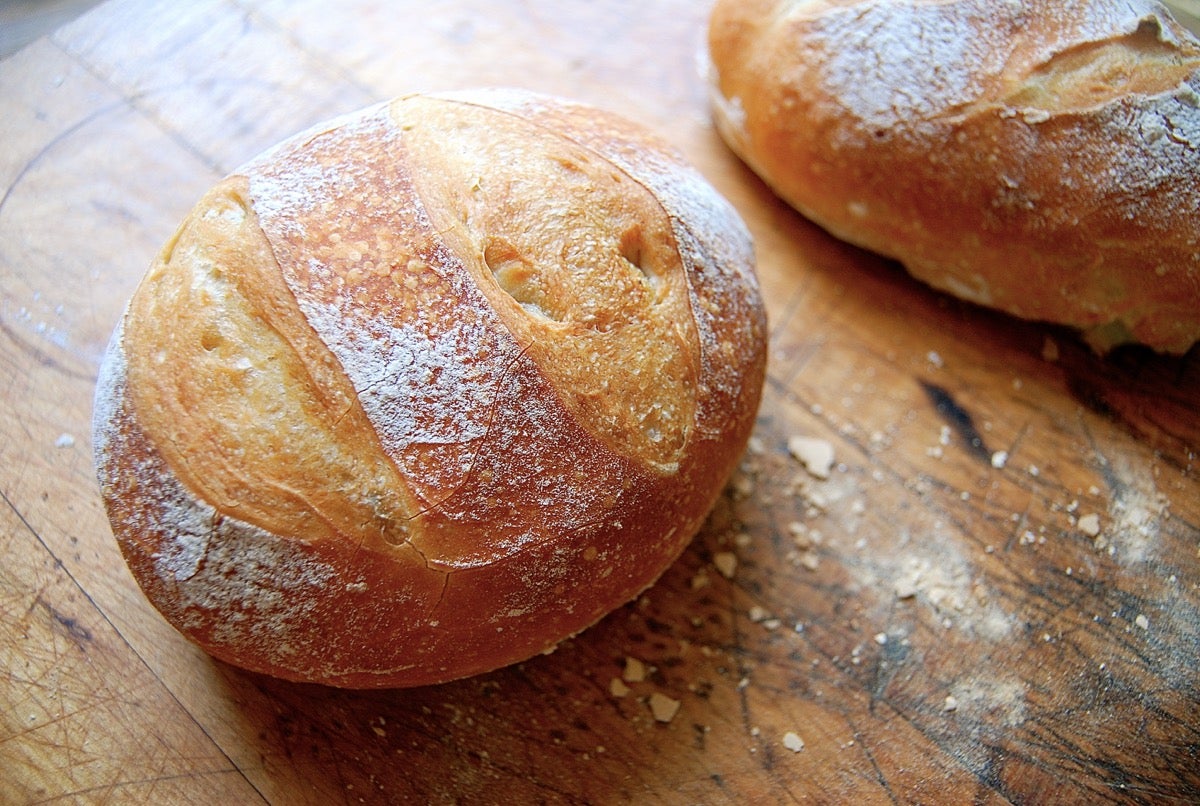
The easy stir-together dough for this ridiculously easy crusty loaf rests in your refrigerator, developing flavor all the time, until you're ready to bake. About 90 minutes before you want to serve bread, grab a handful of dough, shape it, let it rise, then bake for 30 minutes – on a pan or stone, with steam in the oven; or in a cloche.
The result? Incredible, crusty artisan-style bread. If you're a first-time bread-baker, you'll never believe this bread came out of your own oven. If you're a seasoned yeastie, you'll love this recipe's simplicity. And, of course, its crust.
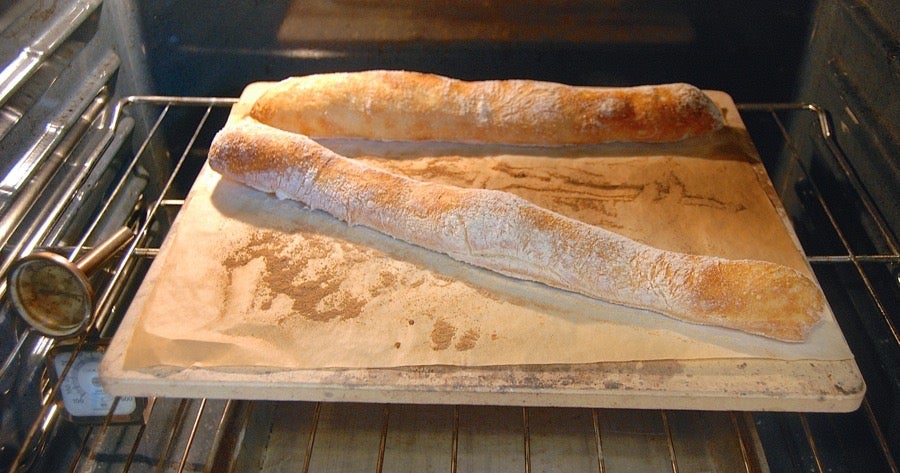
Many bakers find they can create a decent crisp top crust, but struggle to make their bread's bottom crusty, as well.
The best way to brown and crisp your bread's bottom crust – as well as enhance its rise – is to bake it on a preheated pizza stone or baking steel. The stone or steel, super-hot from your oven's heat, delivers a jolt of that heat to the loaf, causing it to rise quickly. At the same time, the bread's bottom, without the shield of a metal pan – which takes awhile to absorb and then transmit heat – bakes super-quickly, becoming brown and crisp.
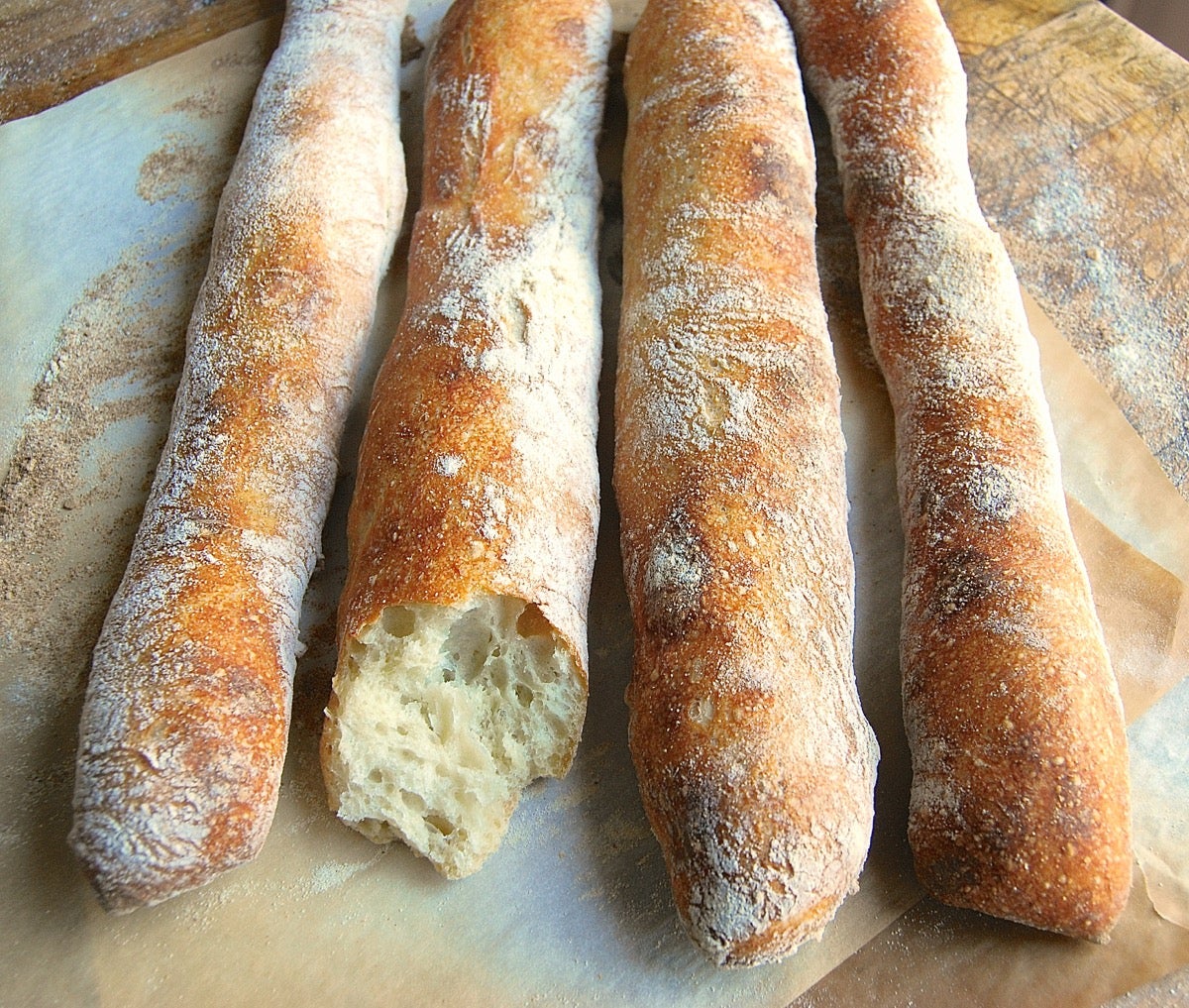
Crunchy and chewy, with great “bite,” each long, skinny loaf of this Italian bread is filled with the large, irregular holes all of us home bread bakers strive for in our baguettes and country breads. And the crust: well, suffice it to say it's the perfect combination of crunch and chew.
Baguettes, which stirato resembles, are made from a dough that's soft and supple, but firm enough to shape easily. Stirato, on the other hand, is made from an extremely slack (wet) dough, which not only produces its large holes, but helps make that same "crispy starch" created by oven steam.
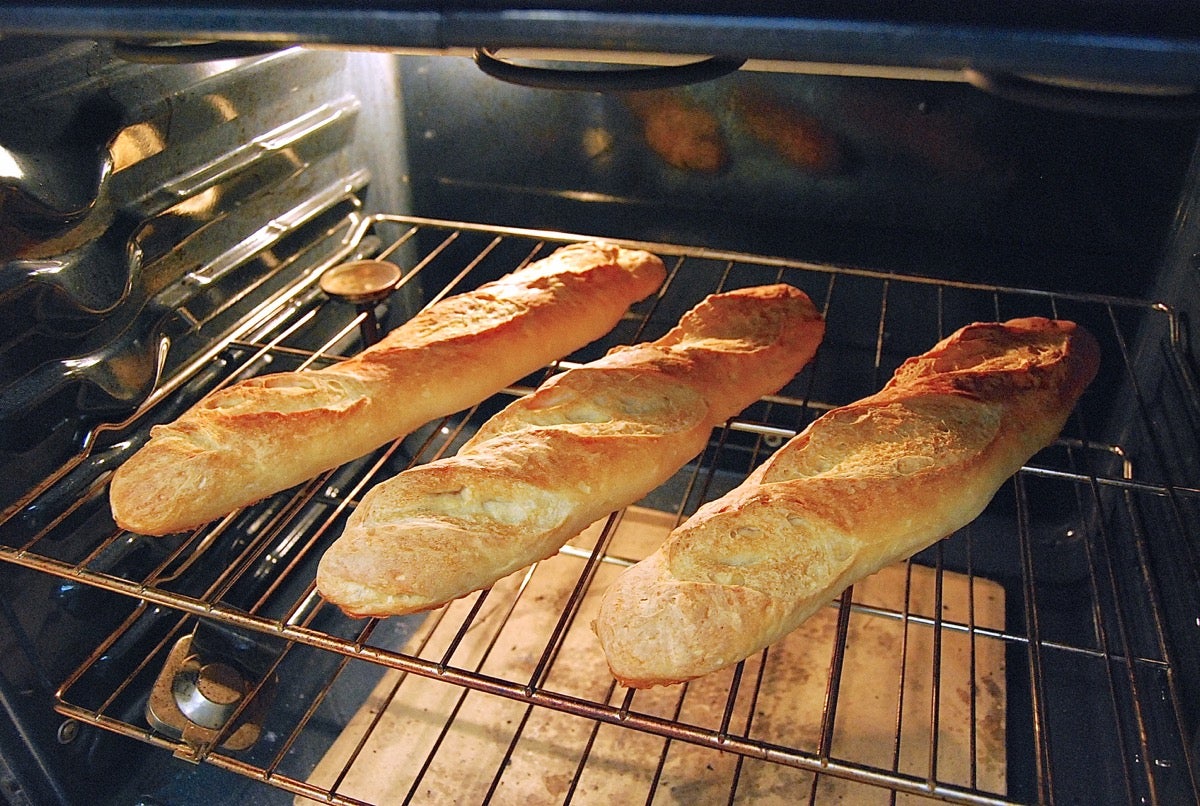
This may sound like an oxymoron – cool bread in the oven? – but it works. Once the bread is baked, turn off the oven. Transfer the bread from pan (or stone) to a middle oven rack. Crack the oven door open a couple of inches (a folded potholder works well here), and let it cool right in the cooling oven.
How does this help keep bread crusty? As bread cools, any leftover moisture in its interior migrates to the surface. If that moisture reaches the surface and hits cool air – e.g., typical room temperature – it condenses on the loaf's surface, making it soggy. If it hits warm air (your still-warm oven), it evaporates – leaving the crust crisp.

And here they are, the sine qua non of crusty bread: baguettes. While it's a challenge to make "real" baguettes at home, this version is probably as close to an artisan bakery version as you're going to find.
This isn't a quick and easy recipe; the starter rests overnight, and the dough itself has two fairly long rises. But the effort is fairly minimal, and the result is well worth the time spent: each loaf sports a thin, light crust that shatters when you slice it. The rasp of a knife sawing through a fresh baguette is one of the most tempting sounds a crust-lover will ever hear.
One thing I didn't explore here is toppings or glazes. Prior to baking, do you brush your bread with a beaten egg white? How about a cornstarch/water slurry, 10 minutes before the bread is done? Fodder for a future post – stay tuned!
What's your favorite crusty bread? And do you have any tips for attaining the ultimate crust? Please share your thoughts in comments, below.